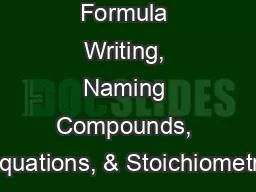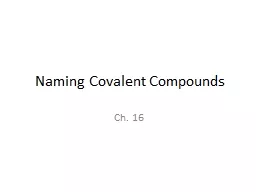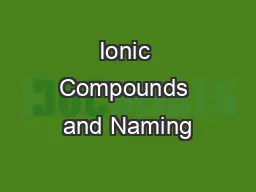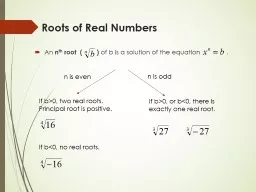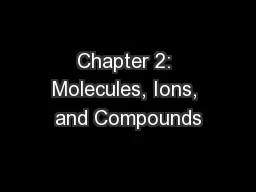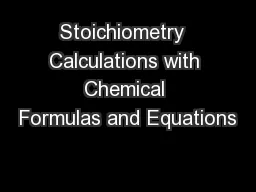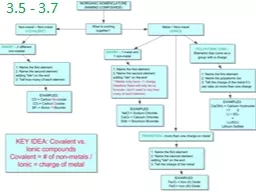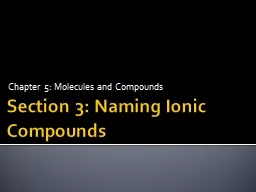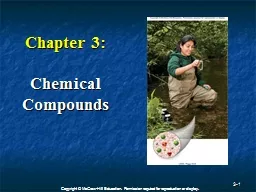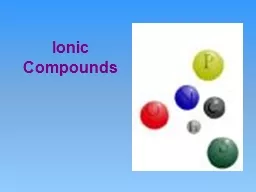PPT-Unit 2: Formula Writing, Naming Compounds, Equations, & Stoichiometry
Author : haroublo | Published Date : 2020-08-28
I Percent Composition Think about this How would you find the percent of boys in our class of boys part x 100 Total of students whole I Percent Composition
Presentation Embed Code
Download Presentation
Download Presentation The PPT/PDF document "Unit 2: Formula Writing, Naming Compou..." is the property of its rightful owner. Permission is granted to download and print the materials on this website for personal, non-commercial use only, and to display it on your personal computer provided you do not modify the materials and that you retain all copyright notices contained in the materials. By downloading content from our website, you accept the terms of this agreement.
Unit 2: Formula Writing, Naming Compounds, Equations, & Stoichiometry: Transcript
Download Rules Of Document
"Unit 2: Formula Writing, Naming Compounds, Equations, & Stoichiometry"The content belongs to its owner. You may download and print it for personal use, without modification, and keep all copyright notices. By downloading, you agree to these terms.
Related Documents

